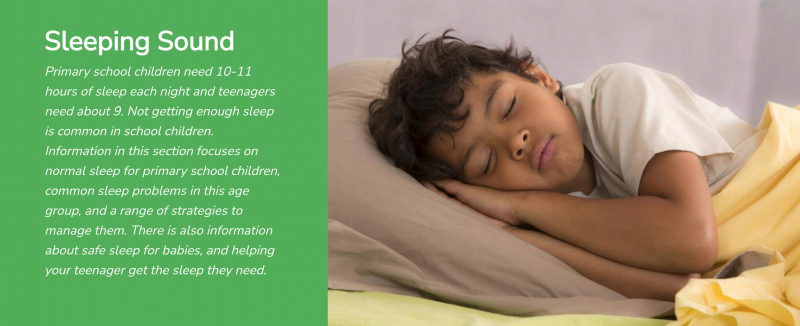Sleep Association
Sleep Association
Sleep associations happen when your child learns to fall asleep with a certain object or activity. Changing sleep associations is all about teaching your child to fall asleep by themselves, without that object or activity.
Key points about sleep associations
-
sleep associations occur when your child learns to fall asleep with a certain object or activity
-
changing sleep associations is all about teaching your child to fall asleep by themselves, without that object or activity
-
establish a consistent bedtime routine that includes calm and enjoyable activities
-
avoid exciting, high-energy activities or watching tv before bed
-
make sure your child’s bedroom environment is the same at bedtime as it is throughout the night
This page is about sleep in primary school children. It's part of a whole section on sleeping sound.
What are sleep associations?
Sleep associations occur when your child learns to fall asleep with a certain object or activity. Changing sleep associations is all about teaching your child to fall asleep by themselves, without that object or activity.
What should my child's bedtime routine involve?
Establish a consistent bedtime routine that includes calm and enjoyable activities, such as a bath and bedtime stories. Avoid exciting, high-energy activities, such as playing outside, running around, or watching TV or videos just before bed. The activities closest to 'lights out' should take place in the room where your child sleeps.
The key to having your child sleep through the night is to have them learn to fall asleep on their own, so they can put themselves back to sleep when they naturally wake up during the night.
Is a consistent bedroom environment important?
Make sure your child's bedroom environment is the same at bedtime as it is throughout the night (for example, same lighting, no music if you are not going to have music on all night).
When should I put my child to bed?
After the bedtime routine, put your child in bed sleepy but awake and leave the room. Remember, the key to having your child sleep through the night is to have them learn to fall asleep on their own, so they can put themselves back to sleep when they naturally wake up during the night.
What happens if my child cries?
If your child cries after leaving the room, you can choose to:
- ignore them completely or
- use the 'checking' method or
- use the 'camping out' method
The 'checking' method involves going into your child at regular time intervals to check on them. The purpose of returning to their room is to reassure your child that you are still there and to reassure yourself that your child is ok.
- for some children, frequent checking is good – say every 2 minutes
- for others, less checking works best – say every 5 or 10 or 15 minutes
- continue to check on your child as long as they are upset
- the checks should be brief (1 minute) and boring - calmly tell your child it’s time to go to sleep but don’t play any games!
The 'camping out' method involves putting a chair next to your child's bed and gradually removing the chair as your child begins to fall asleep alone. On the first night, the parent sits in the chair until the child falls asleep. On the second night, the chair is moved a metre away from the child's bed and the same process is repeated. Continue this until the child is able to fall asleep with the chair and parent outside of the bedroom.
What happens if my child comes out of the room?
If your child comes out of their room you must take them straight back. Ignore any requests for food, drink or talking. Take them back to their room, say "goodnight" and leave. You may have to take your child back many times before they get the message.
Respond to your child during the night
In the beginning, respond to your child as you normally do throughout the night (such as sitting with them). Research shows that most children will naturally begin sleeping through the night within 1–2 weeks of falling asleep quickly and easily at bedtime. If your child continues to wake during the night after two weeks, then use the same checking method described above for the nighttime wakings too. Avoid taking your child out of the room overnight (for example to watch TV or have a drink) as this will only reinforce bad habits.
When should I remove an activity or item?
If there is an activity which your child associates with going to bed and this activity also keeps them awake overnight, slowly remove this activity or item from their bedtime routine.
Common things which children use to fall asleep but keep them awake overnight include:
- TVs
- computer/Playstation games
- mobile phones
Gradually decrease the amount of time your child spends doing the activity before sleep by shortening the activity by 10 minutes every night. Reward them for spending less time on the activity (for example, by a special stamp or sticker in the morning).
If your child normally falls asleep in front of the television, the television should be turned off when the child is drowsy, but not asleep. Better still, remove the TV, mobile phone or computer from the child's room altogether.
See more KidsHealth content on sleeping sound
This page last reviewed 16 March 2023.
Do you have any feedback for KidsHealth?
If you have any feedback about the KidsHealth website, or have a suggestion for new content, please get in touch with us.
Email us now

